
Neue TübkeSchau in Bad Frankenhausen zu SowjetunionReisen WELT
The Panorama Museum Bad Frankenhausen is a museum for contemporary fine art as defined by the International Council of Museums (ICOM). At its centre is the work of Werner Tübke (1929-2004) and in particular his monumental panorama painting "Early Bourgeois Revolution in Germany" (14 x 123 m, oil on canvas).
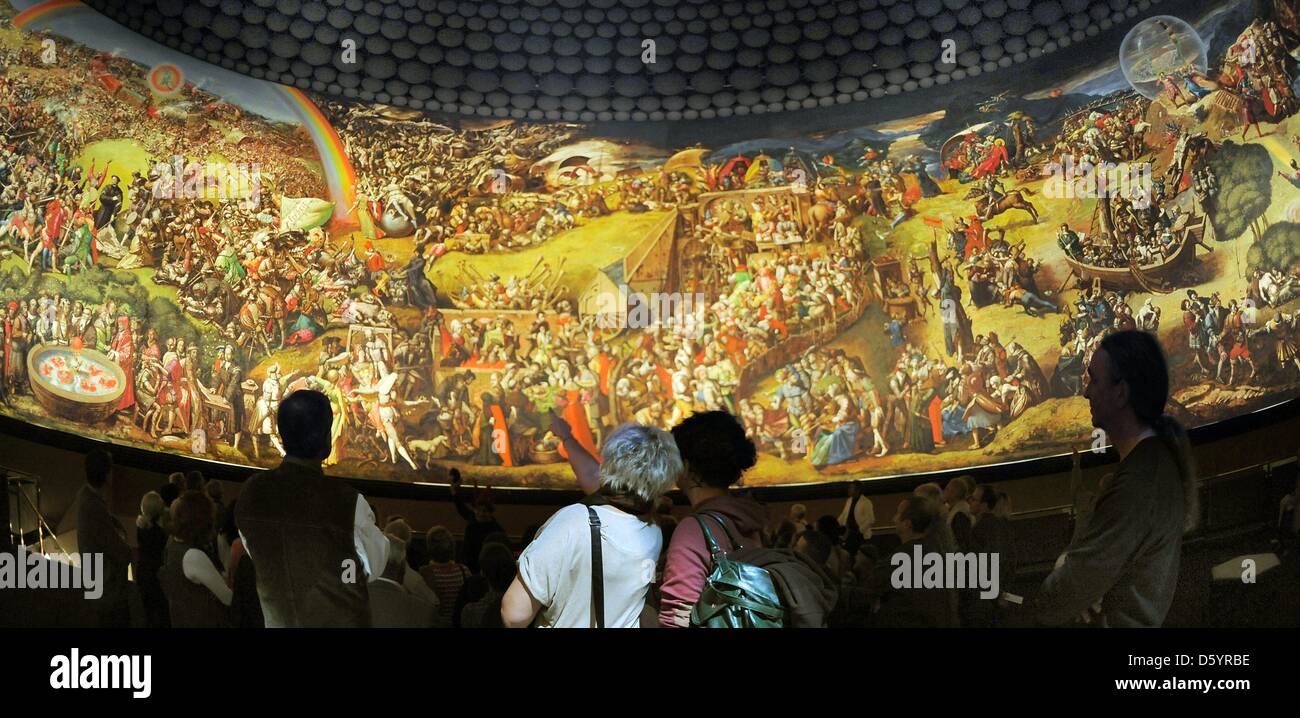
Panorama museum in bad frankenhausen hires stock photography and images Alamy
The Panorama Museum in Bad Frankenhausen is home to a gigantic picture (about 14 x 123 m), which the painter Werner Tübke has made over 10 years. It bears the title "Early bourgeois revolution in Germany" and is absolutely worth seeing even for art connoisseurs. If you look closely, you can find both Martin Luther and Albrecht Dürer in the fray.

Werner Tübke monumental painting "Early Bourgeois Revolution in Germany" at the Panorama Museum
The immense panorama by Werner Tübke (1929-2004) in Bad Frankenhausen is sometimes referred to as the Sistine Chapel of the North. Tübke painted the panoram.
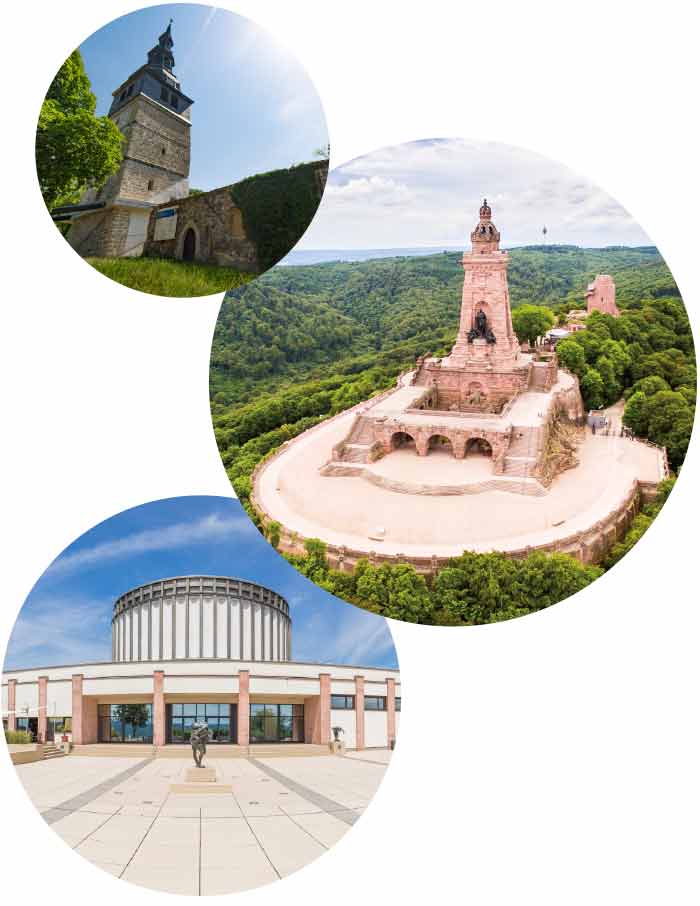
Kur in Bad Frankenhausen KyffhäuserTherme
Von 1976 bis 1987 beschäftigte sich Werner Tübke mit der „Frühbürgerlichen Revolution in Deutschland", dem Monumentalbild in Bad Frankenhausen. 1990 bis 1993 schuf er Bühnenentwürfe zum „Freischütz" und 1993 bis 1996 den achtteiligen Flügelaltar für St. Salvatoris zu Clausthal-Zellerfeld. Werner Tübke starb am 27.

Bad Frankenhausen und der Bauernkrieg One of these days
The Panorama Museum is located on the battle hill near Bad Frankenhausen, where several thousand rebellious peasants were defeated and massacred by the princely army during the decisive battle in May 1525. In the 1980s, Tübke (1929-2004) created a 14 x 123 meter circular painting with more than 3,000 figures and key scenes.
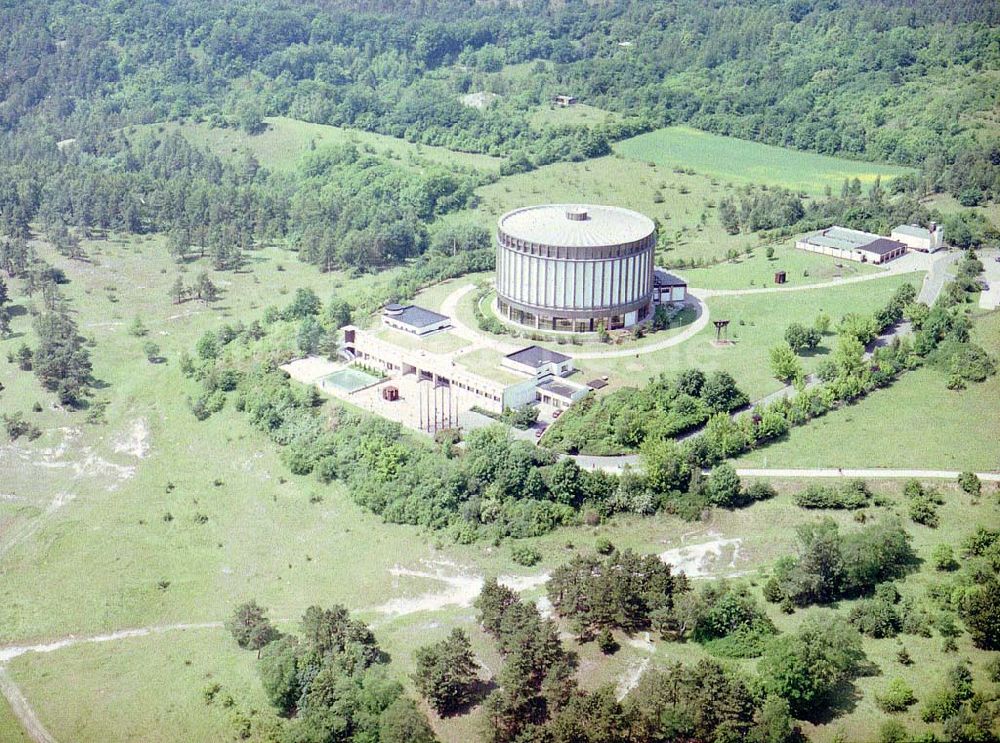
Luftaufnahme Bad Frankenhausen / Thüringen PanoramaMuseum (Bauernkriegspanorama von Prof
Arrival / Parking. Panorama Museum. Am Schlachtberg 9. 06567 Bad Frankenhausen / Thuringia. By car, you can reach us via the motorways A 38 and A 71 and the country roads B 85 or L 1172, and just before the eastern entrance to Bad Frankenhausen turn off in the direction of the Panorama Museum. You will reach the museum car park via the Panorama.
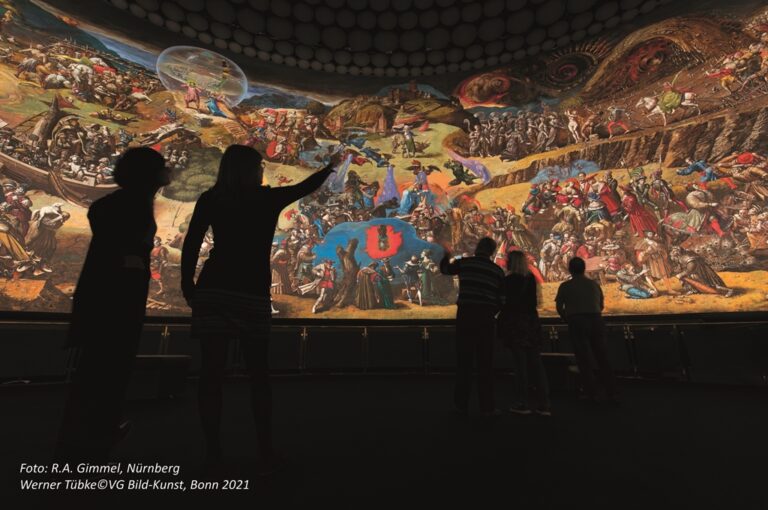
Panorama Museum Bad Frankenhausen Monumentalbild Tübke
From 1976 to 1987, Werner Tübke worked on the "Early Bourgeois Revolution in Germany", the monumental painting in Bad Frankenhausen. From 1990 to 1993 he created stage designs for the "Freischütz" and from 1993 to 1996 the eight-part winged altar for St. Salvatoris zu Clausthal-Zellerfeld. Werner Tübke died on 27 May 2004 in Leipzig.

Werner Tübke monumental painting "Early Bourgeois Revolution in Germany" at the Panorama Museum
History. Frankenhausen was first attested as a Frankish settlement in the 9th century in deeds of the Abbey of Fulda.It received town privileges in 1282 and from 1340 on was part of the County of Schwarzburg.. On 15 May 1525 it was the location of the Battle of Frankenhausen, one of the last great battles of the German Peasants' War, when the insurgent peasants under Thomas Müntzer were.

500 lat reformacji. Wojna chłopska w Niemczech. Dlaczego Marcin Luter potępił buntujących się
Besuch. Das Panorama Museum in der Kurstadt Bad Frankenhausen, zu der Sie unbedingt einen Abstecher machen sollten, präsentiert Ihnen das Monumentalgemälde „Frühbürgerliche Revolution in Deutschland" von Werner Tübke, das Sie im Rahmen einer öffentlichen Führung oder ausgestattet mit einem unserer Audio-Guides erleben können.
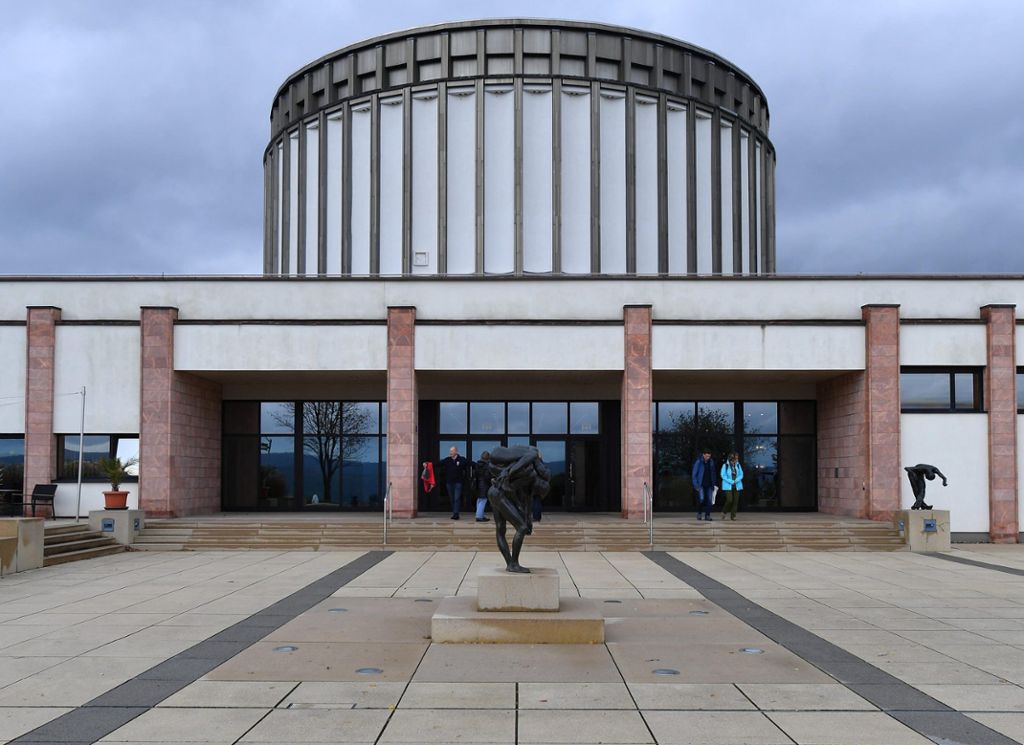
Feuilleton Vor 30 Jahren vollendete Tübke seine Knochenarbeit Region inSüdthüringen
The Panorama Museum in Bad Frankenhausen. Many visitors are engrossed in conversations as they slowly ascend the 80 steps to the hall where the painting is displayed. They feel they already know what to expect, as the clue to the museum's content is in the name: Panorama Museum. But once they reach the last set of steps they suddenly pause.

Harz, Thüringer Wald, Kyffhäuser, Panorama Museum, Schlachtberg, Bad Frankenhausen, Werner Tübke
Werner Tübke (30 July 1929 in Schönebeck, Germany - 27 May 2004 in Leipzig, Germany) was a German painter, best known for his monumental Peasants' War Panorama located in Bad Frankenhausen. Associated with the Leipzig School , he is "one of the few East German artists who gained recognition in West Germany."
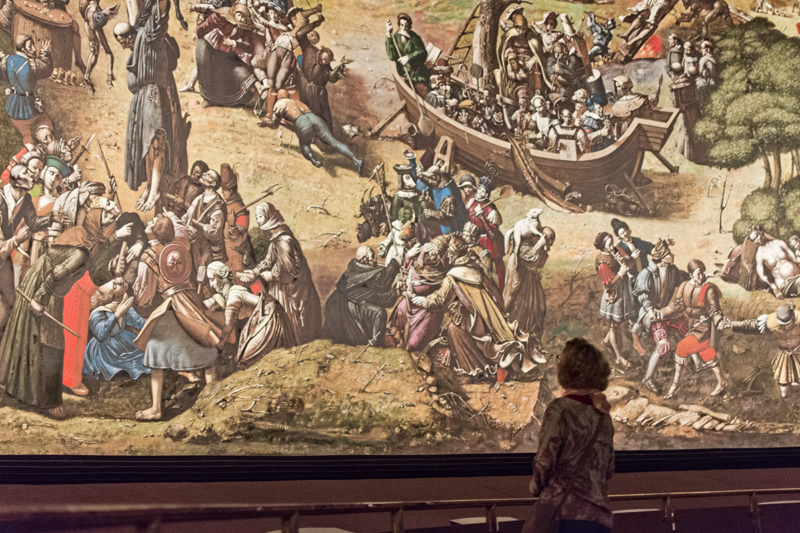
Allstedt Castle & Palace Rosenstadt Sangerhausen GmbH
In this context, Tübke, by then one of the leading figures in East German art, was commissioned in 1976 to paint a gigantic panorama entitled Early Bourgeois Revolution in Germany. It depicts the Battle of Frankenhausen (1525), which led to the defeat of the peasants, and is housed in a specially constructed building in Bad Frankenhausen.

Werner Tübke Peasants' War Panorama Revolution, Medieval Art, Apocalyptic, 20th Century, Oil On
Contact details. Panorama Museum Am Schlachtberg 9 06567 Bad Frankenhausen. Phone: +49 (0) 34671 6190 Fax: +49 (0) 34671 62050 [email protected]

Panorama Museum (Bad Frankenhausen) 2018 All You Need to Know Before You Go (with Photos
Panorama Museum - Bad Frankenhausen.. Tübke began researching the German Peasants' War, the late Middle Ages and the beginning of the modern era, producing drawings, paintings and lithographs. Finally, a scaled-down draft of the monumental painting is created in Tübke's Leipzig studio, contour drawings are later projected and transferred.

Werner Tübke monumental painting "Early Bourgeois Revolution in Germany" at the Panorama Museum
The painter of this masterpiece is Werner Tübke (1929-2004). In 1976 Tübke was commissioned to paint a panorama of the German Peasants' War which took place during the 16th century. Shortly before the socialistic dictatorship ended, the Panorama museum Bad Frankenhausen opened its doors to the public.
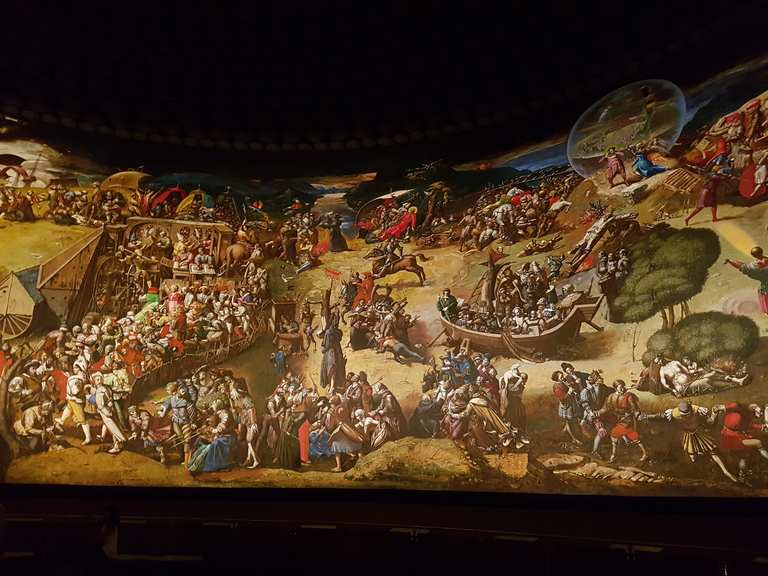
Panorama Museum Bad Frankenhausen Routes for Walking and Hiking Komoot
Das Monumentalgemälde von Werner Tübke gehört zu den spektakulärsten Projekten jüngerer Kunstgeschichte. Auf einer Gesamtfläche von 14 m Höhe und 123 m Länge entfaltet sich in altmeisterlicher Formensprache ein Universum menschlicher Leidenschaften, das nicht nur den epochalen Umbruch vom Spätmittelalter zur Neuzeit bildhaft erlebbar macht.